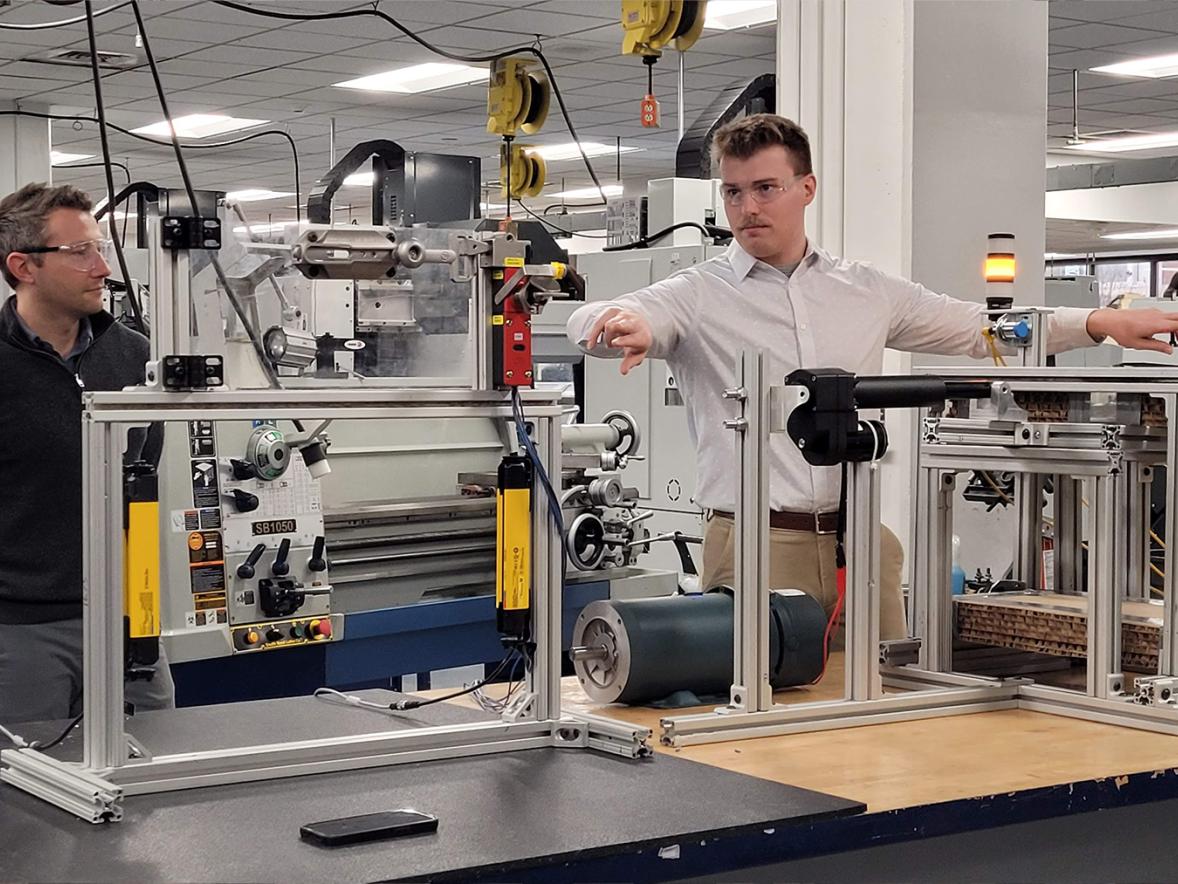On a recent day in Jarvis Hall at UW-Stout, about a dozen pairs of students leaned against lab tables and dug into the results of fermentation experiments they had created.
The strong smells coming from vials in the Rajiv and Swati Lall Microbiology Lab were proof that they had indeed succeeded at fermentation. Each experiment used a different raw, organic material and posed questions. How long did whey, sauerkraut or sourdough starter take to ferment? How much ethanol was being produced in kimchi? How did various inputs and controls impact the process of making mead?
Their tests had greater value than a letter grade. As food science, dietetics, applied science-biology and other majors, they were learning the scientific process with industry-standard testing equipment, skills that can be applied to their careers.
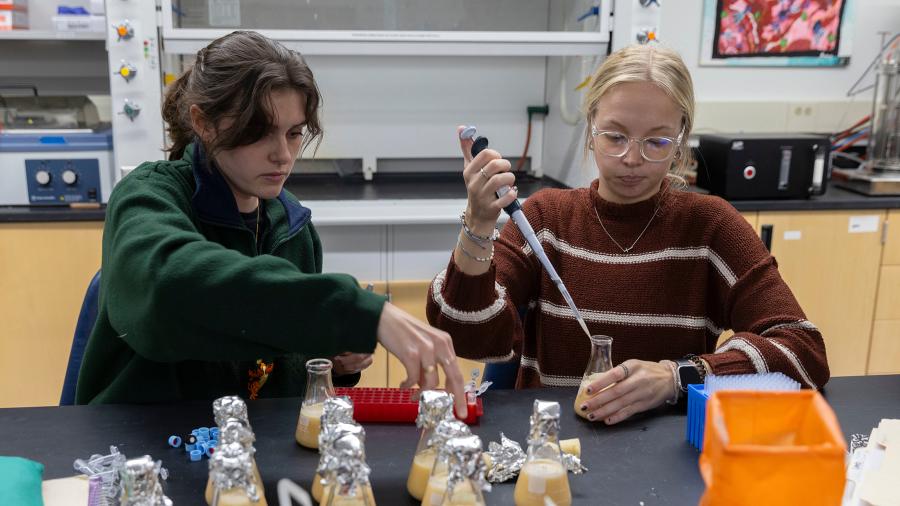
“These experiences are key to developing career-ready graduates. Our students seamlessly transition from college into industrial positions,” Professor Steve Nold said.
The gap between student research and the real world isn’t wide. From 2017 to 2022, about 150 students in the same General Microbiology course taught by Nold conducted ongoing research to support a northern Wisconsin distillery, Copper Crow, near Bayfield.
Copper Crow ferments whey, the liquid byproduct of the cheese-making process, as the basis for its spirits. It’s one of only a few distillers in the country to use whey, but it presents special challenges.
Nold designed experiments in his course to test as many variables as possible and make sure nothing was being overlooked at Copper Crow. The general process was developed by Copper Crow owner Curt Basina, with assistance from Rick Erickson, a Bayfield High School science teacher and distilling afficionado.
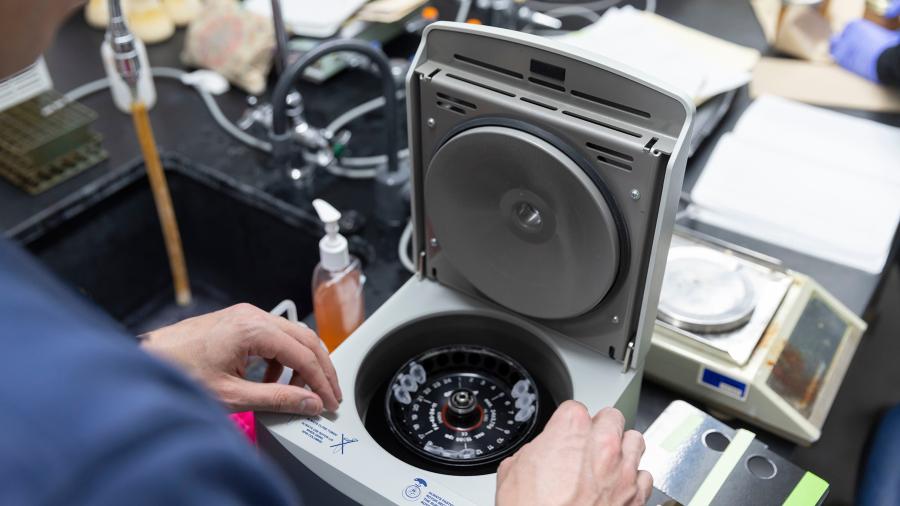
“We needed to find the most efficient means to distill, and Stout was instrumental in helping with that,” Basina said.
One of the student teams in this fall’s class was continuing that research. Emma Flemke, a senior food science and technology major from Red Wing, Minn., and Megan VanHout, a junior dietetics major from Isanti, Minn., were focused on whey. Specifically, they were testing how the lactose (or sugar) concentration affected the amount of ethanol produced after fermentation.
Flemke has more than a passing interest in whey. She interned for a summer at Ellsworth Cooperative Creamery’s cheese facility in Menomonie as a production supervisor. She has accepted a full-time position when she graduates in May.
“The more we understand whey and how it can be manipulated, the more we’ll know how it could be used in the future,” Flemke said.
Wisconsin is the nation’s No. 1 maker of cheese and by default whey, but much of the whey goes to waste.
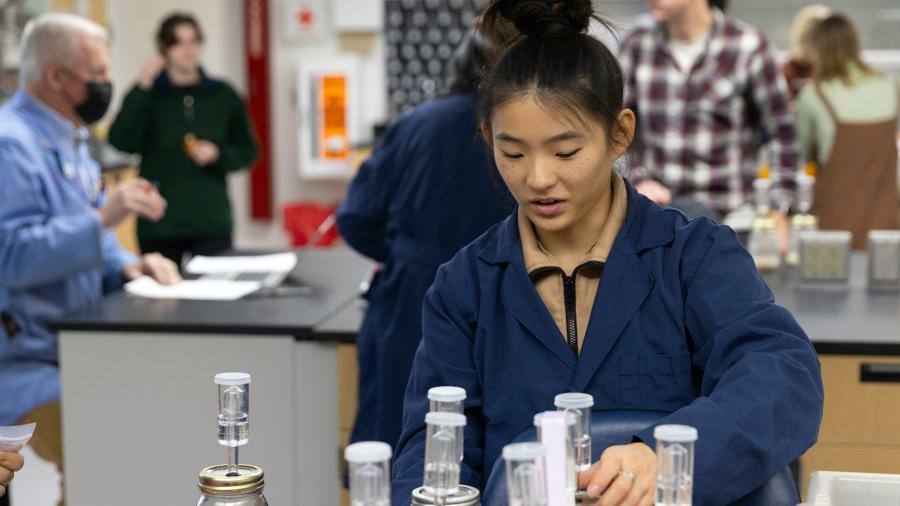
The class has been an eye-opener for VanHout. “This project has brought together a lot of things we’ve learned in other classes. Professor Nold is great about teaching us how to do things properly, how to use different instruments and apply this to our careers,” VanHout said.
Nold’s students will present their research from 1 to 3 p.m. on Thursday, Dec. 7, at the Memorial Student Center along with about 300 others as part of the STEMM Expo.
Some of the other student fermentation research experiments Nold’s current students conducted are:
Sourdough starter: Junior dietetics majors Olivia Donohue, from Mosinee, and Josie Hasenstab, from Milton, experimented with three kinds of yeasts to see how they affected the sourdough bread starter.
They noted that fermented foods can be good for a person’s gut health. As dietetics majors, they were glad they could choose a food as their research subject.
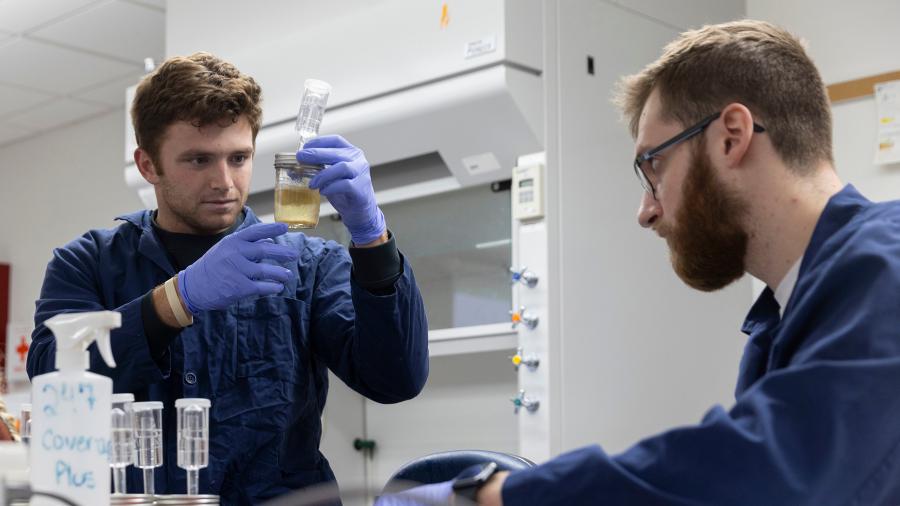
The team used a centrifuge to spin the dough and separate the liquid, then conducted their tests on the liquid. “We’ve got a lot of data to analyze,” Donohue said.
Sauerkraut: Food science major Hope Lent, a junior from Middleton, and environmental science major Sam Stinton, a senior from Minneapolis, made sauerkraut (cabbage and salt) and created four tests to study how varying the salt affects the fermentation process.
“The amount of salt doesn’t affect the amount of ethanol created but how fast. More salt speeds up the process,” said Lent, noting the process takes from three to six weeks.
Stinton and Lent were excited to learn how nutrient proportions affect the conversion to alcohol, as well as the being able to learn testing skills they can apply to their future careers.
Kimchi: Dietetics majors Devan Greene, a senior from Eden Prairie, Minn., and Alex Moe, a junior from Wilson, tested for pathogens in kimchi, a Korean food similar to sauerkraut using cabbage, spices and potentially other vegetables.
They found how varying inputs into their mix and changing temperatures impacted the fermentation and produced such things as lactic acid, acetic acid and dextrose.
Ale yeast: Dietetics majors Ella Gigstead, a junior from Albertville, Minn., and Nicole Demulling, a senior from Osceola, conducted tests on grains used to make ale. They tried sorghum flour, corn meal and wheat flour and learned that the grains all made ethanol.
Along with the high-performance liquid chromatography, they used a micropipette, a lab tool to measure tiny amounts of liquid, and Excel spreadsheets to help them analyze their data. “There’s a lot of science behind dietetics,” Gigstead said.
Mead: Applied science-biology concentration majors Ethan Kalin, a senior from Maplewood, Minn., and Marty Kiernan, a senior from Ashwaubenon, made mead, an ancient, fermented beverage with a base of honey, water and yeast, while adding apples. However, they experimented with how the size of the apple pieces affected the process.
“We wanted to see how it affected the ethanol content and the speed of fermentation,” Kalin said. “It doesn’t affect it much.
“There’s been a lot of data analysis, and learning the lab techniques using a sterile environment has been very good,” Kalin said.
###





